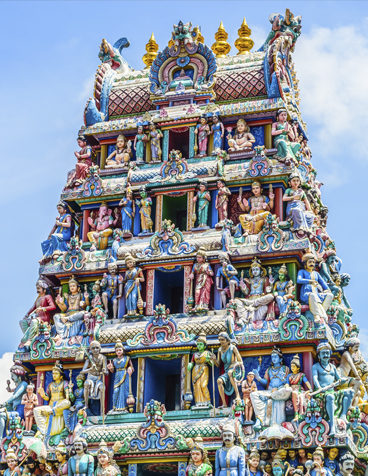
In Hinduism, rituals are meant to inculcate spirits of devotion and religiosity and thereby bring God and spirituality into the centre human life.
Hindu Rituals primarily involve sacrificial offerings to gods, beings, departed souls, humans and other living beings. The offerings are generally made on daily, weekly, monthly or annual basis. Some offerings are made on precise occasions that come only once in a lifetime. Such offerings are meant to be made without claiming reciprocal advantages as a service to God and his manifestations.
According to Dharmashastra texts vary greatly with respect to the details of the samskaras as well as which ones are to be performed. Often the practise depends on the customs of the different societies. The outstanding feature of these comprehensive rites and practices is that our ancients had such respect towards every noteworthy moment in a person's life. Human life was seen as a grand celebration and prayers were recited to ensure that there are no hindrances to the celebration.
This is considered the most important samskara in the Hindu tradition and is conducted in many ways, depending on the community.
This is a prayer before conception (typically after menstruation). The wife invites her husband to have sex with her and give her good offspring.
Once the woman finds out that she is pregnant, her husband serves her a special dish, praying for the healthy growth of the Baby
In an advanced stage of pregnancy, relatives and friends of the expectant mother come together to bring her cheer.
Once the child is born, a ritual is performed to welcome the child to the world. The father whispers a prayer into the ear of the newborn, telling the child to suck the truth as if it were his mother's milk.
On the tenth or eleventh day after birth, the relatives and friends come together; during this ceremony the name of the child is formally announced.
In the third or fourth month, the child is first taken outside the home and shown a sunrise or a sunset (or taken to a temple).
In the sixth month, once the teeth begin to develop, the child is given solid food for the first time.
In the seventh month, the earlobes of the child are pierced accompanied by prayers that ask for the child to hear bliss through her ears.
When the child is a year old, the head is shaved and nails are cut. This rite inculcates the child's entry into personal hygiene.
When the child is about five years old, she is introduced to the letters of the alphabet. This might also include prayers to goddess Saraswati and lord Ganesha.
When the child was about eight, he would be given a sacred thread to wear and taught the Gayatri Mantra. This marked his entry into formal education.
For those students who were allowed to study the vedas, this rite (typically a yajna conducted along with the guru) marked the student's entry into Vedic knowledge. those who were not allowed Vedic education, there might have been similar rites to mark the entry of the child into a school.
In the case of boys, shaving their facial hair and for girls, the celebration of menarche.
After spending about 12 years in the house of the teacher, the student would graduate. A ritual to mark the completion of his/her education.
Upon death of the person, the dead body is typically consigned to flames on a wooden pyre. The rituals associated the death go on for thirteen days after the death.